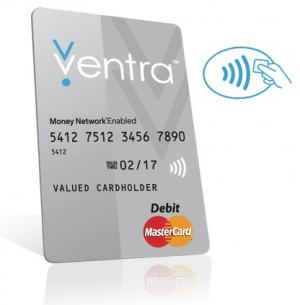Chicago, Philly Move Forward on Open Loop; NFC Could Follow
NFC Times is Expanding Its Coverage
This story is a free sample of new premium content from NFC Times, the most authoritative source of news and analysis in the industry.
To view this sample story, click here:
Or download it as part of a free sample of the world’s first global PDF newsletter devoted to the business of NFC and related topics:
NFC Times: The Intelligence Report
Become a subscriber to NFC Times to receive future issues of the newsletter and exclusive online news and analysis:
Subscription Options

Chicago is scheduled to become the first major U.S. city to introduce open-loop collection of transit fares, when it launches its Ventra payment system, which project organizers say will begin this summer.
The system features two new ways to pay fares–either with a closed-loop prepaid contactless Ventra fare card, which also carries a MasterCard brand that could be used for open-loop retail payments if users activate an optional “prepaid debit” account.
Or users can tap to pay with their open-loop contactless credit and debit bank cards and could even link a Ventra transit account to the bank cards and load that back-end account with value or with unlimited ride passes, such as one-day, seven- or 30-day passes.
They could then ride on Chicago Transit Authority trains and buses as well as suburban buses operated by a separate transit agency, Pace. There are also disposable contactless paper tickets.
The system, to be implemented and operated by U.S.-based Cubic Transportation Systems, would completely replace magnetic-stripe cards by next year, according to the schedule. Project organizers say Ventra would eventually support payment from NFC phones.
SEPTA, the transit authority serving Philadelphia, is scheduled to begin rolling out its own open-loop payment system, which for now it calls New Payment Technologies, or NPT, beginning in late 2013 to bus, trolley and subway riders. A second phase, expanding the system to regional rail, is scheduled to begin in the first quarter of 2014, according to SEPTA. There will also be a closed-loop card as part of the NTP launch.
Elsewhere in the U.S., Washington, D.C., is in the procurement process for an open-loop fare-collection system.
All the new systems, both the open-loop and close-loop components, will move to account-based fare collection, in which the fares are generally deducted in the back office, not at the terminal. That requires a more intelligent backend system that does not calculate fares at the terminal and doesn’t store the value directly on the card.
The change will also save money, especially if more riders use their bank-issued credit and debit cards to make payment, reducing labor costs for transit agencies. Agencies, at least in the West, want to get out of the business of fare collection, as much as possible.
But it remains to be seen how well consumers will take to using their bank cards to pay fares.
The Utah Transit Authority, a much smaller system than those in Chicago, Philadelphia or Washington, D.C., introduced open-loop fare collection in 2009, but has recorded only about 400 transactions per day from contactless bank cards on buses, trams and trains– fewer than 1% of total fare transactions.
A UTA transit official blamed that on a relatively low penetration of contactless cards in riders’ pockets. Enabling riders to pay with their debit or credit applications on NFC phones as part of the trial of the Isis Mobile Wallet in Salt Lake City was getting only 600 transactions per day as of February, despite the fact riders could tap their phones to ride for free as part of an Isis-funded promotion.
Meanwhile, Transport for London was the first major transit agency in the world to launch open-loop payments, which it did last December on 8,500 buses it oversees in and around London.
After four months, it recorded its 1 millionth fare from customers using contactless credit or debit cards. That works out to around one transaction per bus per day.
But the rate of transactions has been increasing as awareness grows. And by the end of the year, the authority plans to expand the system to the London Underground and its other modes of transport and to inaugurate the sophisticated back-end system to calculate fares and authorize transactions.












